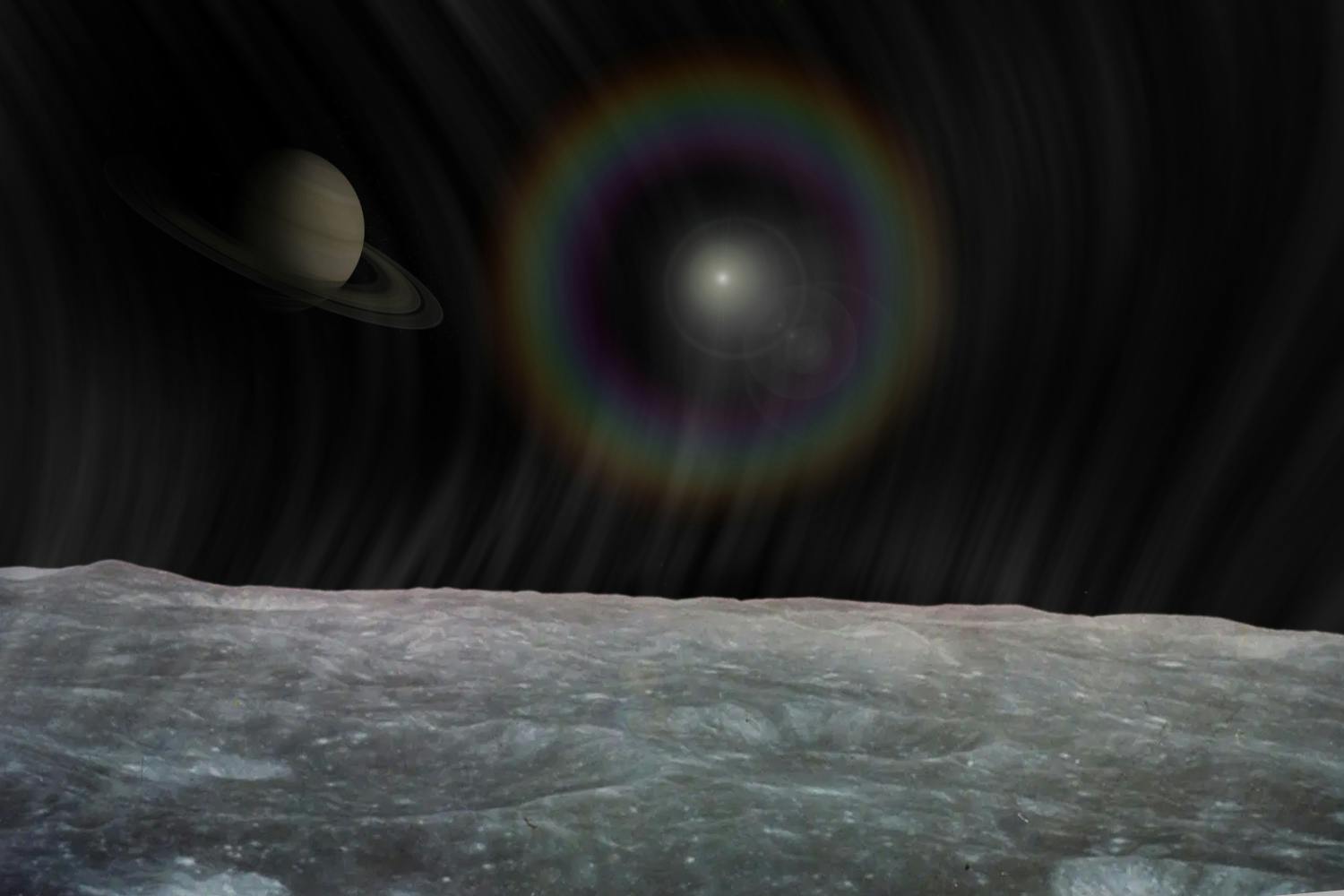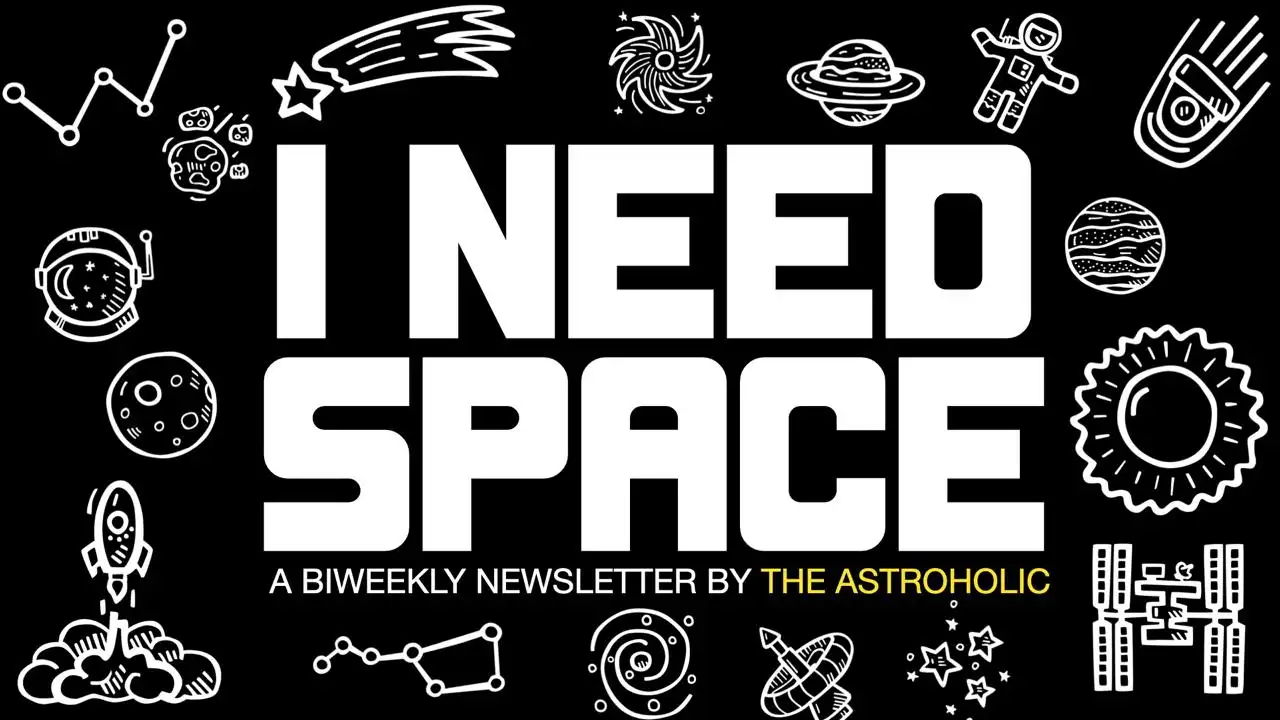Where do alien-leprechauns hide their gold? Alfredo explores the colour spectrum, and tells us what rainbows on other worlds could look like.
Listen on Apple Podcast or on your favourite podcast player through Anchor.
Welcome to The Astroholic Explains, I’m your host Chris!
And I’m Alfredo, the Astroholic.
This is a podcast where I throw some cosmic conundrums your way,
And I try my best to answer them. Let’s get started.
So today’s question is going to be a lot more wholesome than some of the other more apocalyptically minded questions that I ask you. So I’m going to dive right into this one. Can you get rainbows on other planets? Because on planets like Venus where it rains sulfuric acid for example, could you see things like acid-bows?
Alright, that is a very, very interesting question. Technically yes, you should be able to see Venus-bows.
Acid-bows.
Acid bows, yes, you’re right. And methane bows on Saturn’s moon Titan. Well, Titan is very cold and Methane is liquid but there is a methane cycle like the water cycle on earth. Rains evaporate, it creates lakes, rivers, puddles. The question is how much light penetrates. Both Titan and Venus have very thick atmospheres. So Venus has, I think, over 90 atmospheres.
Like 90 layers of atmosphere?
No, an atmosphere in like a unit. So on earth, at sea level, you have about one atmosphere. So the Venusian atmosphere is weighing heavily on you. On top of that, Venus is the hottest planet. Its surface is around 470 degrees Celsius and it rains acid. So not an ideal place to go and wait to see rainbows and the thick clouds makes it very difficult to see anything.
Would they still be a similar sort of color? Would there be a different sort of spectrum?
What I’m thinking is that Titan = thick clouds! But infrared light goes through the clouds. There’s this gorgeous observation from Cassini, the NASA, ESA, and Italian space agency’s spacecraft that orbited Saturn for way over a decade. And you could see the reflection of infrared sunlight on a Titan’s lake and that’s absolutely fantastic. Can you see a rainbow? I think I need to look up a few things. So how does a regular rainbow work? Light passes through a raindrop and it acts like a prism and it splits the light into what we see as its fundamental colors. Clearly there are not just seven. Seven are the cultural significant colors that we put in; because the colors are spectrum and we can see that go from one color to the other.
If you were to take an infrared photograph or an ultraviolet, you’d see,…
you should be able to see that. As long as the methane in the atmosphere of Titan can act as a prism for infrared light.
Would it still appear as a bow? It would be the same sort of shape?
Uh, possibly. I think the bow shape is due to just mimicking the sun. And I think that was why when we see like the rainbow halo around the moon, it’s a full circle.
Because with rainbows themselves here on earth, I know if you get high up enough and you can sort of look down to see a rainbow… there are videos online. People have managed to capture these amazing pieces of footage of entire rainbows. So what we usually see is just flat across the horizon. Just half a circle. But if you’re looking down on this, it is an entire circle!
Yeah. Didn’t we see one when we were in New Zealand? In Queenstown?
We saw like three-quarters.
We were quite high-up this mountain and we were looking down and we saw more than the regular half and you start wondering why are the leprechauns carrying their pots of gold so close to each other?
So the idea is it’s all optics and refraction from sunlight. So how would it work? It might be the clouds are too thick. So they would create something like the moonbows. So it’s just gonna be a rainbow-y halo around the sun. But again, it depends very much on the physics of the atmosphere…
Have there been any official studies on this?
Yes. Well, NASA actually has made a few “sort of Frequently Asked Question” about this stuff. You can have rainbows on Titan, but they might be very rare because you need some direct sunlight and Titan is very hazy.. but are certainly possible. And liquid methane has a refraction index that is slightly, slightly different from water, but it’s not going to be that dramatic. You would have the same order of colors. So blue on the inside, red on the outside and on top there’s going to be obviously the slightly orange tint of Titan’s atmosphere.
So the question is would we be able to see it easily? So let’s ignore Venus and acid-bows. Let’s imagine that we want to do a new mission to Saturn. For some reason, we don’t want to do Enceladus, which is the icy moon, which has geothermal activity and so possibly complex chemistry. So maybe they can have some sort of a life form maybe. If I were a betting man, I would bet that life elsewhere in the sort of system is there, but also as a scientist, I need to bet against that because if it is, then I’m super excited about it.
So if we have this mission to Saturn and Titan. Let’s assume we landed there. Have the right equipment and we can do this observation. How likely is for it to be, and I think it’s not going to be that likely. Even think how excited we get here on earth to see rainbows and the form quite easily. You just need a few right conditions.
It’d be a much bigger event in space.
It’s not just a bigger event in space. It just going to be a lot more difficult for the right condition to happen. You need less haze. Let’s assume that you cannot have a clear day sky, but you can have less haze. You need to have the right equipment focusing on the infrared.
Some sort of moisture involved…
Well, that is created by the liquid methane.
Would there be any way of having some sort of Mars-bow?
I don’t think so because Mars obviously is really dry and dusty and I don’t think there’s anything to do it with.
Has distance got anything to do with it as well? Would they appear to be bigger or smaller the further away you got from the Sun or the closer you get to the Sun they become bigger? What would they look like on Pluto?
I’m not sure. Distance would definitely play a factor, but I don’t know exactly what factor is that. Maybe it would just appear smaller in the sky maybe, I’m not sure. It’s just that obviously after a while you need to start wondering, okay, why there is no star-bow or anything and it’s just that you don’t get enough light so, so the might be a cut-off point for when you get enough light in the solar system for it.
Pluto, again, has some precipitation. There is some, possibly nitrogen, but it’s probably sublimation. So going from solid to gas directly. So there not going to be anything that would allow for the formation of a Pluto-bow, nitrogen-bow, hades-bow. I dunno!
Hades-bow would be cool!
An Ice-bow. Something that we haven’t considered is both Enceladus, the icy moon of Saturn and Europa, they release ice plumes. So maybe not a full rainbow. But would you be able to see something like a bit of a rainbow through their ice plumes?
Potentially, I guess. They’re the ones that are sort of like an icy volcano that are just shooting up.
It depends on their density. Might be the density is very, very low. But it’s something… like at the moment that we are so biased… when I think of this icy plumes, I’m thinking something like the leftover from a geyser or maybe the sort of fine mist that you see next to a waterfall.
It’s gotta be lots of thicker than that, surely?
I think it’s going to be less thick than that. I think these plumes, they become big and everything but I don’t think they are as thick.
There’s a time-lapse video of one!
https://svs.gsfc.nasa.gov/vis/a010000/a011600/a011688/EnceladusJets-540-MASTER_high.mp4
Yes, but we’re seeing it from far away…
Precisely if we’re seeing it from far away, then surely it’s much thicker. If we can actually see it, it’s gotta be thicker than like the mist from waterfalls.
Eh, not sure. Because like nebulae that we see and they seem so thick and gorgeous, they densities way, way, way, way, way, way smaller than even the finest mist you can think of. And If you were inside those nebulae looking around, it’s not like you were being in a thick fog, only looking out, you would see that there was a haze.
I feel there is potential for rainbows in space, but I feel they are a much rarer event elsewhere in the solar system compared to what we are used on Earth.
That’s pretty cool. You can only imagine that the treasure at the end of those rainbows would be even more impressive because it’s so rare.
Do you have any burning questions for the Astroholic? If so, send them to me @illucifer on Twitter and I will spring it on him in an upcoming episode. See you next time!

